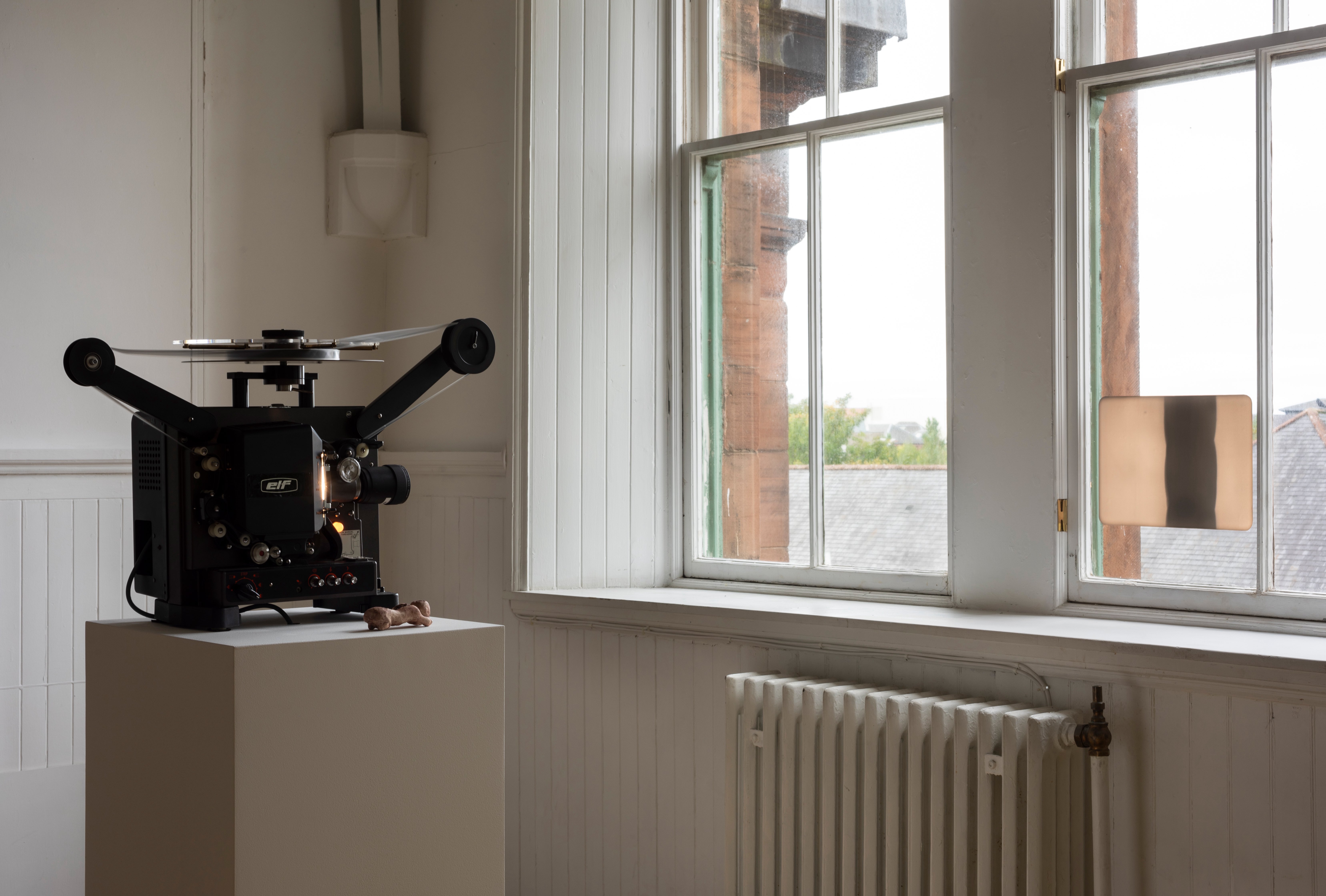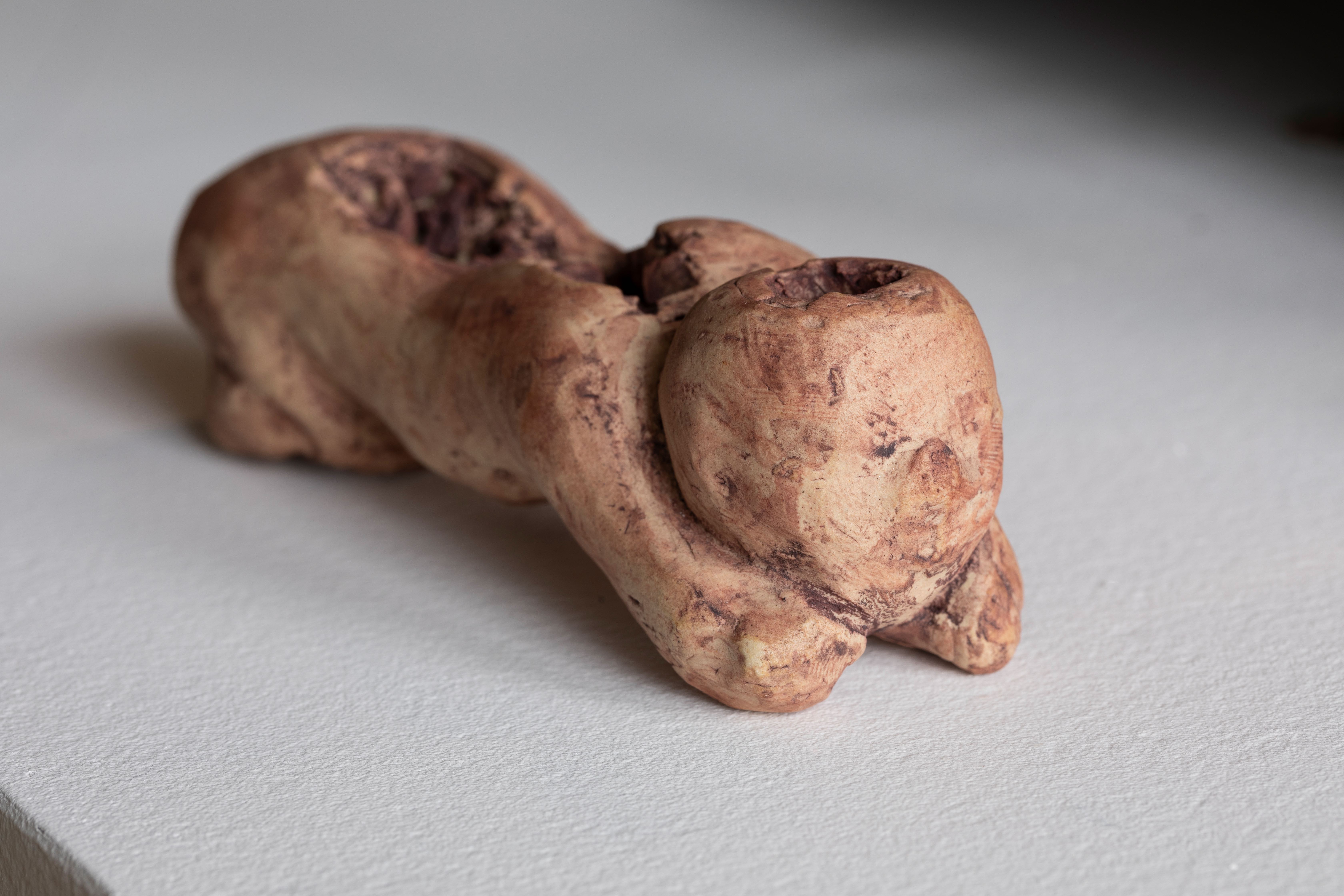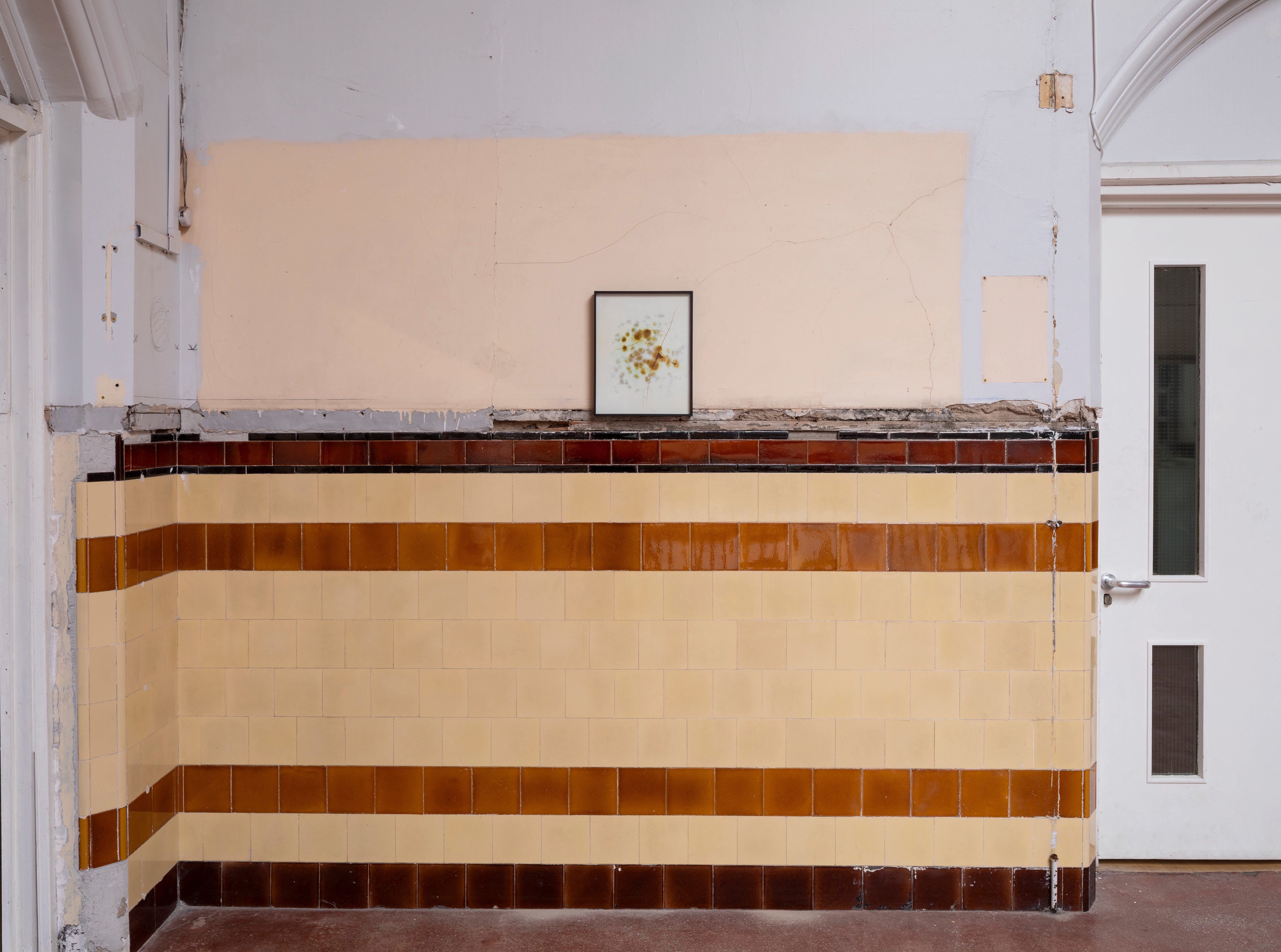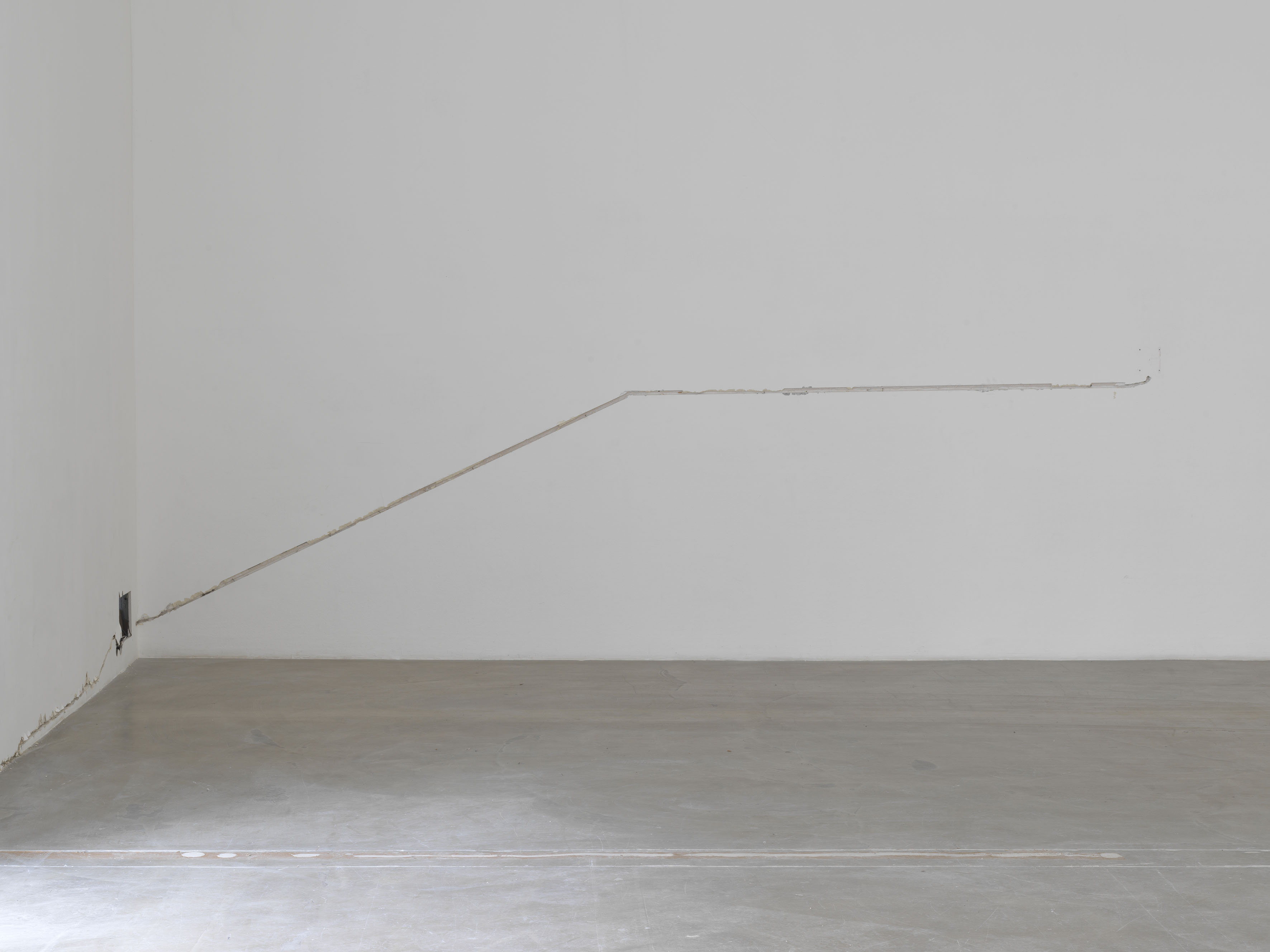I want to describe the title film of Peng Zuqiang’s first institutional exhibition in the UK, Afternoon Hearsay (2025), as a whisper wrought from the past. I don’t mean to sound abstract, poetic, nor to insinuate that this work of art fails to speak boldly to the conditions of our present. A three-channel video, with a 5.1 audio surround, as the artist is keen to stress, Afternoon Hearsay feels enveloping, resonant. Composed from mesmerising streams of red, green and blue celluloid ribbon, the work presents a montage of film strips in motion; found reels of 8.75mm film that Peng has reformatted, blurred and burned together in a way that makes plotlines dizzy. Like a rumour spreading through a crowd, the film's fragmentary form obscures a critical through line. Watching it feels like chasing a covert story, piecing this together from snippets of dialogue Peng has “wrapped in the threads of a lightbeam”, to quote one of the film’s four narrators.

Five years in the making, Afternoon Hearsay tells the social and material history of 8.75mm film; a story which, to me at least, holds the politics of this ‘lost’ cinematic medium besides the political malformation of images today. Peng’s work is not a documentary or a research film; it is a speculative non-fiction rooted in experiences of life. Told by four narrators, the plot pairs Peng’s technical research into the specifics of 8.75mm celluloid, its manufacturing history and the motives behind its development, with second- and third-hand anecdotes gathered during his travels across rural areas of China, where the film format was produced. As with any great literary work, the style, syntax, grammar, and grain of Afternoon Hearsay are as equally important as what is being said. To integrate the 8.75mm ribbons into his film, Peng used a self-fashioned enlarger to transfer the footage from vintage reels onto larger formats, 16mm or 35mm. The continuous clack and cascade of little square rebates seen in the film not only testify to this DIY process, but imbue the work with a sense of animism, notably one which echoes the haphazard way rumours morph as they move through generations.

Unlike the similarly sized Super 8 format, 8.75mm film has no formal history. One-quarter of the width of 35mm (and, logically, requiring one-quarter of the projection equipment), the medium was developed exclusively in communist China between 1960 and 1980. Due to its size, 8.75mm was seen by the Chinese state as the most economical way to disseminate educational and propagandist media to those living in rural regions. Again, unlike its cousin Super 8, which was developed in part to allow a mass public to create their own home movies, a camera that could record with 8.75mm film was never made, not that this stopped some from trying. This meant a Chinese public was only able to receive the information told to them, never able to represent themselves or to connect through film.
It's of note that Peng developed Afternoon Hearsay during the fallout of the Chinese ‘white paper’ protests and the political censorship that followed (the ‘white paper’ protests were mass demonstrations held in cities across China as a reaction to the government’s heavy-handed Covid-19 policy. During and after these events, the government sought to censor all forms of documentation relating to the protests, arresting and disappearing film-makers for example). Connecting this contemporary event with the context of 8.75mm film, these histories demonstrate how state forces intercede in the production and dissemination of images, limiting who has access to image-making technologies as well as what images can be shared – who and what can be seen. These limitations echo a question that guides Peng’s unique practice as a filmmaker: What is a film without a camera?

This line of thought resonates throughout Peng’s exhibition. The cameraless film installation Déjà Vu (2023) is demonstrative of this. For Déjà Vu Peng photogrammed 30 metres of the metal wire normally used by Chinese emergency services during high-rise rescue operations, reproducing a trace of this length on 16mm film. Flickering like a flame, the single line central to the work doesn’t document instances of a civic catastrophe (tower block fires, for instance, that political forces are keen to keep out of the press), but uses a trace of this material to conjure the smoky impression of a memory, the sensation of déjà vu, I could say. Besides this ghost image, the installation includes a small ceramic brush rest, a replica of a carved jade object from the Qing dynasty, and a looping audio narrative. This narrative recounts memories and experiences of physical injury that the protagonist has endured due to civic accidents, hate crimes, or acts of police brutality. As with Afternoon Hearsay, it appears to be a composite of multiple voices woven into a semi-fictitious whole. Repeating almost endlessly, the text operates akin to Peng’s cameraless image: snippets flicker and fade with each repetition, producing only partial memories, the sound of déjà vu.

The effect of this minimal installation is quite chilling. Writing about Déjà Vu on his website, Peng asks,“is it possible to use one’s own physical memory to understand or relate to someone else’s experience?” As with much of Peng’s work, Déjà Vu uses materials affectively, weaving together individual experiences and reproduced forms to craft something more universal. Subtle, yet philosophically and physically compelling, the installation connects histories of sociocultural struggle through the media made to feel like memories. Afternoon Hearsay operates similarly. Watching the film, I cannot help but think about the precarity of memories when they are held in images and how forces mediate what is captured, stored, and seen for their own ends. It feels significant to be writing this at a time when images of genocide are being ignored or manipulated for fiscal gain, when image technologies are becoming ever more monopolised by industrial forces spreading misinformation and hateful ideologies.
As I see it, in reanimating the history of 8.75mm film, Afternoon Hearsay tells a critical story covertly. That is, by animating materials from the past otherwise, Peng’s work haunts contemporary modes of image circulation. In an age when images are policed more tightly than ever, Peng’s work stands as a glimmering thread of resistance, a projection of the non-fiction that lies beyond the limits of political plotlines.
—
Peng Zuqiang (b. 1992, Changsha, China). Recent solo presentations include Rockbund Art Museum, Shanghai (2025), The Common Guild, Glasgow (2025), Fondazione Sandretto, Turin (2023), Kevin Space, Vienna (2023), Cell Project Space, London (2022), E-Flux screening room, New York (2022), Antenna-Tenna, Shanghai (2021). Peng graduated from the Rijksakademie van Beeldende Kunsten, Amsterdam in 2024, the School of the Art Institute of Chicago in 2017 and Goldsmiths, University of London in 2014. He lives and works in between Amsterdam and Paris.
Toby Üpson (b. 1996, Ipswich, UK) is a writer based in Glasgow. In 2025, his first collection of poetry was published by La chaise jaune. He is an Ambassador for Amsterdam Art and a Mentor for What Could Should Curating Do’s education programme. Between 2023 and 2024, Üpson was a Faculty Member of the Metabolic Museum-University based at KW Institute for Contemporary Art, Berlin.




